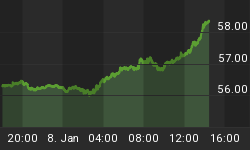Let's look at some trading implications of the first lesson on some of the basics of EW. These first two EW lessons are not meant to be exhaustive. My intent is to give those who are new to EW a taste of the practical side of this method of analysis. More lessons are to come, and this will be the general format. It will be didactic followed by practical applications to trading. Be patient. As you grasp the basics, the rest will come easy.
We will look at the rules first.
- Wave 2 cannot exceed the beginning of Wave 1. ~ Example: You think that there is a high probability that the market has completed a corrective move. You base this opinion on your analysis of price and pattern. The market then rallies 4 points and you think this may be the beginning of an impulsive move. You think this is W1. You don't want to chase the breakout, so you decide on trading the pullback, or W2. You put a limit order at the 61.8% retracement level of what you suppose is W1. Your limit order gets hit and you are long. What's your next move? Place a stop! So where do you place your stop? Yup, you got it. You place a stop one tick below the beginning of W1. Why? because this would no longer be a W1/W2 structure, and the premise for your trade is negated at that level. Is it possible that it dipped below W1, but could take off into an impulsive wave anyway? Yes! It's possible, but that's not the question. The question is, "is it probable?" Remember, we trade based on probabilities, not possibilities. Hope is not a valid setup!

- Wave 3 cannot be the shortest impulsive wave. ~ The primary trading implications of this rule are that you need to know where you are in an impulsive move. In fact, the main goal of EW analysis is that we know as best we can where we are in the market. If the wave you are identifying as W3 is the shortest of the three impulsive waves (1, 3 & 5), then maybe you are ahead of yourself in labeling the waves, and you are looking at waves of a lesser degree. Fortunately, Advanced GET recognizes these rules and won't mistakingly label the shortest wave as W3. You will get better at counting waves as you continue to practice. Waves also have a certain proportionality or look to them.
- Wave 4 cannot retrace into the price range of W1. ~ My software allows a little overlap in a highly volatile market such as the highly leveraged ES. But, I would be looking for an alternative count if I saw overlap. Again, you have to know where you are in the count, because as you will see in the next example, we expect overlap in some impulsive waves. Sometimes ES travels too far, too fast. When it does that, it's not unusual for W5 to form an ending diagonal (ED). In an ED, we expect overlap of the waves. Other trading implications and ED peculiarities are noted on the illustration.

- This last trading implication of the first lesson is implied. Sometimes when the market is weak, we see a different reaction from Wave 5. We see a failed W5. A hint that W5 might fail is a 5 wave pattern that is completing below the level of W3. When we see a W5 failure (truncation), we can expect a deeper than normal correction.

I didn't have to look far to find at least a truncated W5 in recent ES history. This example is very instructional. Look at the correction from the weak W5!

Try my 30 day free trial.
I hope that my new subscribers who are also new to Elliott Wave Analysis are seeing the power of EW. I don't know how I could trade without it.
Thanks and have a great weekend!
















